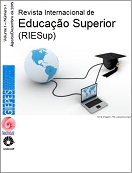Abstract
The article defends the thesis that, in the second modernity, we are facing new post-bureaucratic ways of education governance to achieve improvements. The so-called "educational restructuring" assumes, in fact, a new "governance" of education, which includes - among others - deregulation, commercialization and introduction of management principles of business scope. Are analyzed two routes of developing to generate improvement: one that favors competition, using commercial image as regulating device, and another addressed to the commitment and collaboration of the actors (SAHLBERG, 2011). The first pressing from the outside, and the second seeking an implication from within. The performing pressures have their intrinsic limitations, so if requires the establishment of a culture conducive to learning (HARGREAVES and FULLAN, 2014). There are other alternative routes that Hargreaves and Shirley (2012) qualify as a "fourth way", which ensure good learning for all cannot be only imposing object. A logic of committed and professional autonomy is an alternative route, supported by means of participation of persons to whom professionalism is recognized to make decisions.A Revista Internacional de Educação Superior utiliza a licença do Creative Commons (CC), preservando assim, a integridade dos artigos em ambiente de acesso aberto.
Downloads
Download data is not yet available.

